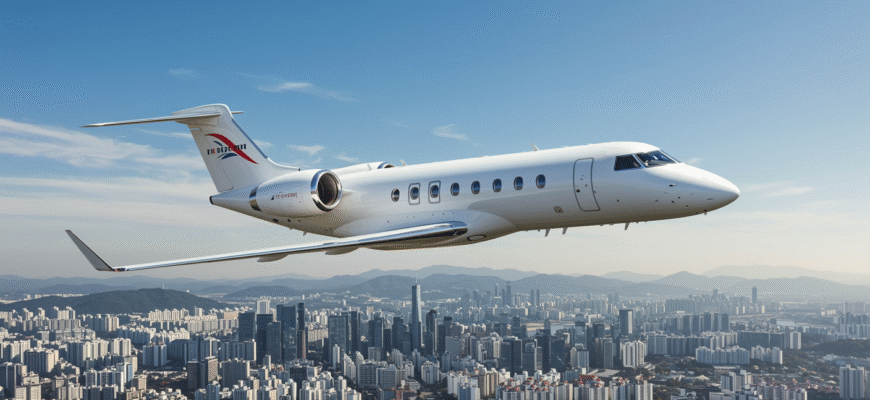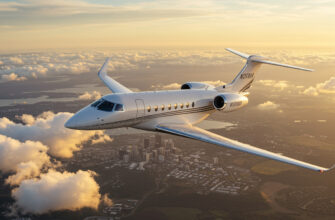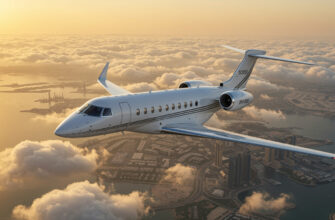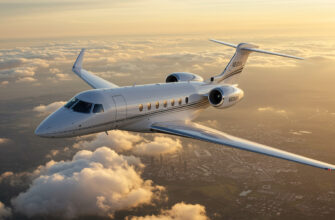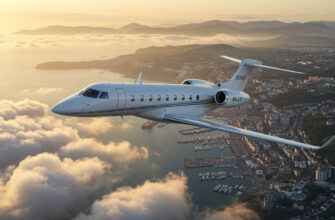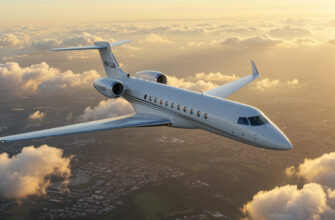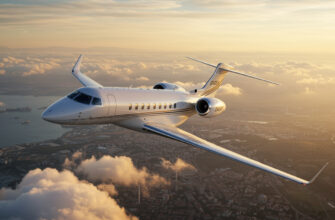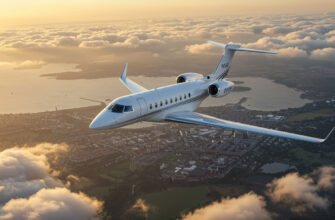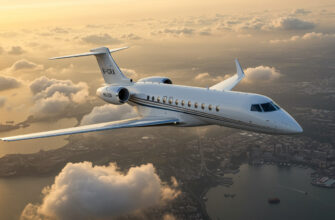Boarding a private jet to or from Seoul isn’t just about flying—it’s about moving with intent. Whether it’s a tech magnate closing global deals, a K-drama star dodging paparazzi, or a group of diplomats arriving under blackout conditions, private aviation in and out of South Korea’s capital is deeply personal and wildly efficient. What’s really on the line here? Time you won’t get back. Privacy you can’t afford to lose. Prestige that can bend a boardroom. Control that keeps you from waiting in lines or lingering in terminals.
This is a world where plans change midair, hanwoo steak gets plated at 40,000 feet, and your next boardroom is waiting before your wheels even touch down. Ahead, this guide breaks down the real cost of chartering a jet in Seoul, how to navigate the airport scene, which jet fits the vibe (and the range), and who’s flying where—and why.
What It Really Costs To Fly Private
Private jet pricing isn’t just about the jet—it’s about how far you’re going, how fast, and how flexibly you want to fly. Let’s break it down:
| Route | Jet Type | Passengers | One-Way Price |
|---|---|---|---|
| Seoul → Tokyo | Super midsize | 8 | $46,200 |
| Seoul → Los Angeles | Ultra long-range | 12–16 | $150,000–189,000 |
| Seoul → Singapore | Heavy jet | 10–12 | $90,000–105,000 |
| Seoul → London | Ultra long-range | 12 | $200,000+ |
The range varies by:
- Jet class: Light jets (~$2,000/hour) are great for short-hauls. Ultra long-range jets (~$17,000/hour) are for crossing oceans in full comfort.
- Ownership type: One-off charters give max flexibility; jet cards offer predictable pricing; fractional ownership requires a bigger commitment but can pay off long-term.
- Hidden costs: Think aircraft repositioning fees, overnight crew accommodations, premium airport slots, in-flight catering upgrades, and hangar service charges.
Flying from Seoul to another global business capital might seem pricey at first glance—but time saved, deals secured, and stress avoided quickly balance the books. Especially if your itinerary is tight enough that even a single delayed connection could mean losing millions.
Primary Airports For Private Jet Arrivals & Departures In Seoul
Seoul has two solid options for private jet access, and deciding between them isn’t just about looks—it’s about logistics.
Gimpo International Airport (GMP) sits just 10 miles from the central business district. That proximity makes it the top choice for same-day turnaround flights, tight schedules, or clients craving seamless entry. Its executive terminal is all about privacy, speed, and top-tier VIP concierge services.
Incheon International Airport (ICN) is better for long-range arrivals. It boasts extended runways that comfortably handle ultra-long-range jets like the Bombardier Global 7500 and Gulfstream G650. Customs is smooth, and high-end facilities are built around comfort and clearance speed. It’s farther—about 30 miles west of downtown—but many choose it for heavy international loads or midday congestion avoidance.
Some seasoned travelers fly in through ICN, then transfer overland or by helicopter to downtown. Others pick GMP to bleed every last second out of their time in Seoul. It depends on your wing span and schedule.
Who Uses Private Jets In Seoul—And Why
Catch a heavy jet touching down in Seoul on a weekday and you’ll spot one of three types of passengers: corporate dynasties with billion-dollar legacies to protect, K-pop brands in full tour armor, or international investors arriving for high-stakes negotiation marathons.
Korean chaebols—the family-run conglomerates behind Samsung, Hyundai, and others—often charter on short notice. Their teams move in clusters: legal, PR, R&D leads, sometimes even family executives. For them, confidentiality is strategy. Showing up unannounced isn’t a flex—it’s a power move.
K-pop idols and their entourages lean into chartered jets when touring across Asia, North America, or Europe. Not because they need to impress, but because security, styling, and rehearsal rhythms can’t be compromised by crowded terminals or four-hour waits.
Foreign investors use private aviation when deal schedules don’t allow for commercial slippage. Landing at 8AM, hitting the boardroom by 10, and departing after dinner is easier when the jet holds, waits, and flies back on their command.
Then there’s the seasonal crowd. Autumn’s golden leaves bring in ultra-wealthy leaf-peepers and culture lovers from Tokyo, Singapore, and Paris. Spring turns private arrivals into a frenzy thanks to cherry blossom season and luxury festivals across the capital.
Everyone flying private into Seoul has one thing in common: they know time isn’t money—it’s more valuable than money. And this city runs on those who refuse to waste it.
Customizations at 40,000 Feet: Pure Seoul-Style Luxe
Flying private out of Seoul doesn’t mean cutting corners on culture—it means elevating it. Regulars aren’t just stepping into jets; they’re stepping into curated sky lounges. Think premium hanwoo beef seared mid-air, Michelin-tier omakase trays, even onboard makgeolli tastings for clients testing new business ventures with a toast that nods to tradition.
The interiors? Picture this: heated floors inspired by traditional ondol systems, celadon trim, custom lacquerware details, and mood lighting that shifts like a Hangang river dusk. This isn’t decor—it’s identity in motion.
In the sky, entertainment is serious business. Extended K-drama marathons, freshly pulled studio dailies for producers in-route to screenings, even secure video conferencing with time zone-stacked headquarters in Tokyo, Seoul, and LA. One CEO reportedly closed their IPO round during a live midair call—between the appetizers and dessert.
How to Book Like You Run the World
What apps are the chaebol kids and crypto whales using to book jets in Korea? Ever heard of Avinode, LunaJets, or JetSmarter? Yeah, neither have most frequent flyers—but exec-class passengers rely on them like clockwork. More than apps, it’s about the backchannel. Executive assistants aren’t just clearing calendars—they’re coordinating secretaries at every touchpoint, syncing jets with red carpets, boardrooms, or the Gwangjang Market laneway.
To keep things on lock, the pros build a “ready-to-fly dossier.” That means scanned passport backups, visa data tied to your usual routes, exact meal requests (ginseng chicken or oat milk cortado?), plus recurring ground transport profiles. Got a tea preference? It’ll be on board. One returning tycoon reportedly always requests barley tea brewed at 85°C—anything less gets swapped before wheels-up.
Post-Landing Touchpoints: Ground Game in Seoul
The moment you touch down, the city meets you right at the door—literally. Seoul’s top-tier flyers don’t walk through terminals. They step into style, with VIP handlers waiting on the tarmac to escort you straight into your car—no passport lines, no cameras in your face.
Up next? Your ride, pre-warmed or cooled depending on season. Genesis G90 for smooth city gliding, armored Range Rover if you’ve got extra eyes watching, or the whisper-soft Maybach that’s often the first pick for visiting royalty. From there, you’re dropped directly at your selected suite—maybe the Fifth Avenue-esque calm of the Four Seasons Seoul, the panoramic heights of SIGNIEL, or the glass-box escape of Park Hyatt.
Before you even hit your room, some travelers opt for a quick security brief—especially helpful for visiting execs stepping into sensitive negotiations or A-list talent needing extra buffer from paparazzi. All arranged before landing, all hush-hush quiet.
Why Private Aviation in Seoul Isn’t Just a Flex—It’s Corporate Strategy
Time isn’t just money when flying into Seoul—it’s leverage. With HQs spread across Tokyo, New York, and Gangnam, timing meetings across three continents without private air becomes chaos. Flying private? It becomes chess.
Onboard, discretion is baked in: NDAs signed on iPads before boarding, facial ID confirms itineraries without loose lips. You never know if the man across the cabin holds your next acquisition deal—or your trade secrets.
Delays aren’t annoying—they’re ruinous. Try launching an IPO five minutes late. Or imagine a canceled K-pop meet-and-greet with 5,000 fans and global livestream sponsors. Private aviation doesn’t just prevent fallout—it’s how they stay ahead.
